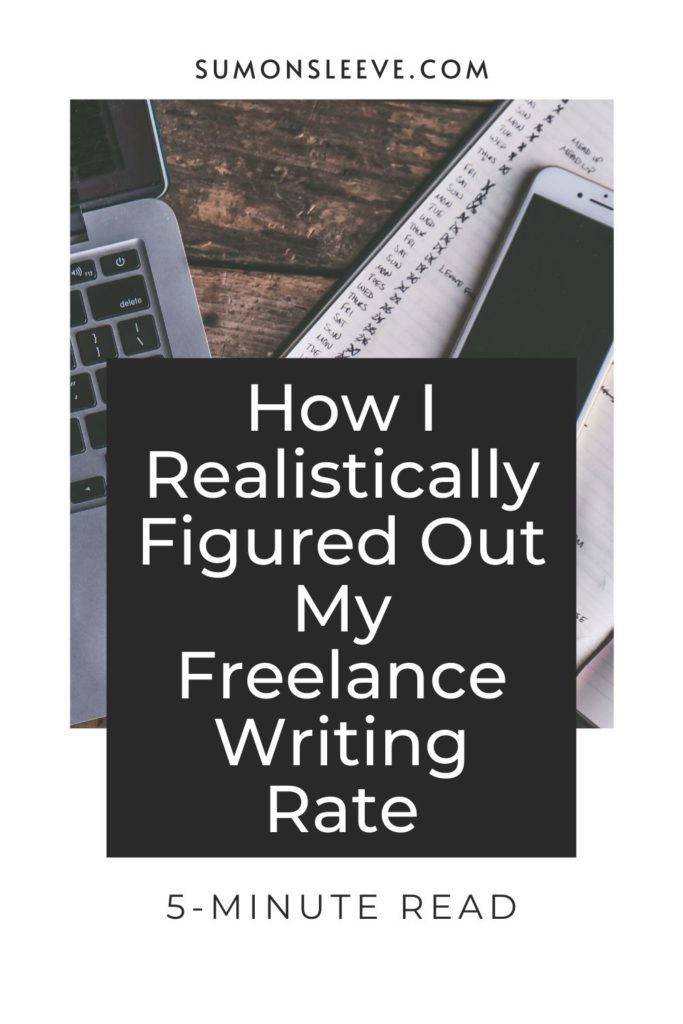When I made the decision to start freelancing, the first thing I had to do was realistically figure out my rate. Here's the method that I created (From someone who's been employed her entire 15+ years career)

Although I’ve been blogging since 2017, I only officially started my freelance writing journey a little over 2 months ago. I’ve dibbled and dabbled with selling books and courses but the amount of money I was making just wasn’t enough for me to leave my 9–5. But most importantly, it was leading me down a path that didn’t align with my passion for writing.
When I made the decision to start freelancing, the first thing I had to do was realistically figure out my rate.
Opposing opinions and methods
So I Googled “freelance writer rates”. I read every article on the first page of the search results. I mean, who even looks at the second page right? Anyway, I got a slew of opposing opinions and methods.
From charging per word, per page, per hour to the type of work, it was confusing for someone who was just starting out but had been working professionally for over 15 years.
Do I charge as a newbie? Or as an experienced writer? Or somewhere in between?
The range is so wide, it’s almost impossible to choose a rate that I thought was reasonable.
Where do I even start?
Humility versus assertiveness
In addition, I’m Asian and female so humility is deeply ingrained in my DNA. It was really hard to put a number to work I love doing. Maybe it’s my parents’ voice echoing ‘Writing is a fool’s dream’ in my mind but I had trouble justifying a rate.
I want to get paid appropriately but I’m not used to charging people; throughout my entire career, I was paid depending on my job description. Aside from the initial salary negotiations during the interview process and the annual performance reviews, I rarely talked about the amount I made with my employer.
But when you’re freelancing, you have to talk about it every time you do work for a client. This is for existing and new clients. And the rate is dynamic depending on the type of work and how much you’re doing for them.
You have to talk about it before starting the work, when revisions and edits are requested, when they’re asking you to do more or less than you initially agreed on and when you’re billing them. And of course, you have to remind them if they miss your payment deadline (fortunately, this hasn’t happened yet).
This requires a lot of assertiveness. So instead of picking an arbitrary rate that I would most likely concede once challenged, I decided to create a method to my madness to justify what I deserve.
One of the reasons I’m writing all of this down is to keep myself accountable and to anyone who may become my client.
First, I figured out an hourly rate based on everything that affected my decision to leave my 9–5
I had to take into consideration everything I thought mattered in my decision to leave my 9–5. Although I was just starting out as a freelance writer, I’ve been writing professionally (emails, memos, reports, project plans, briefing notes etc) for over 15 years.
While climbing the corporate ladder, with promotions, raises and bonuses, my salary is a rough reflection of my work experience, skills and abilities, education, depth of knowledge, and professional designations and certifications. Therefore, it was a good place for me to start.
First, I had to take into account the taxes and expenses I would be paying once I started my small business. Right now, my paychecks are by default net of taxes so I had to calculate out my gross salary.
Then I divided this by the number of hours I work in a year. So working full-time is approximately 2080 hours (8 hours per day X 5 days per week X 52 weeks per year).
I adjusted this rate with vacation, benefits, sick days, paid statutory holidays, pension and everything that I wouldn’t be paid for if I’m freelance writing.
Lastly, I needed to consider the type of industry I had been working in. As someone who has worked her entire career in healthcare and government, I know I am severely underpaid. Don’t get me started on budget cuts, salary freezes and working endlessly due to understaffing issues. Anyway, so I asked myself,
“How many days do I want to work while being able to be a present mom to my kids and have quality time with my husband?”
I wanted to work 3 days while maintaining the same lifestyle.
So I took the amount from above and divided it by the number of hours working 3 days a week, which is approximately 1248 hours (8 hours per day X 3 days per week X 52 weeks per year). And that became my hourly rate.
Second, type of work based on my hourly rate
I did a little experiment where I helped a client write an email and timed myself. Once I figured this out, I was able to extrapolate how much I would charge for each type of work. The length of the email mattered as well because if a client wanted super long emails, I would have to take longer and the more I charged.
I decided that if a client wants me to do recurring work such as monthly newsletters, weekly emails, daily social media content and so forth, I would take a small percentage off since I know the work would get easier once I am familiar with their style and type of content.
Third, one-off pieces based on previously paid work
I decided to charge non-recurring pieces the rate websites typically paid for my articles. For anything longer than the typical 750–1000 word articles, I would start billing per hour. This included revisions, re-writes, and any meetings that required me to talk through their feedback.
Plans to assess and re-evaluate regularly
I’m still in the early days where I haven’t had to juggle too much work. Once I gain more experience in the freelance arena, I will re-evaluate how much I will charge. I see this as a starting point. Over the next year or two, I know my rates will change. And I’ll make sure to write how and why I decided to do that.





